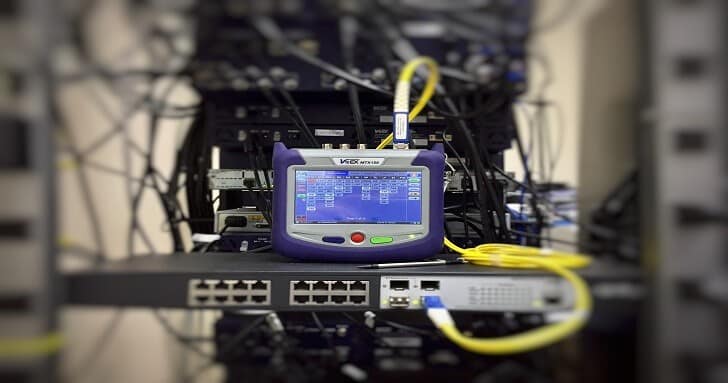When it comes to how the world processes information, there are generally two major categories: there’s wired and wireless.
As much as wireless technology has even the hub of talk for the past few decades, wired is the way most of the world operates. It’s how systems and cities communicate. Wired is the infrastructure that the world uses to anchor a wireless arm. For example, Ethernet is still how major corporations distribute within the workplace. It is still how the entire medical industry is connected.
In other words, wired telecommunications are the backbone of the most important industries on earth. And with them comes the computing core of nearly every independently operating machine: the microcontroller. Here, we’ll explore the importance and uses of the wired telecommunications world, as well as microcontrollers that help man the entire outfit.
What Is Wired Telecommunications?
So you may be asking yourself, “what’s the difference between wired and wireless? There seems to be a huge buzz over wireless.” As much as this may be true, wireless technology is primarily crafted and sold to the everyday consumer. These are people who want wireless connectivity within a range of maybe a few meters. Laptops, phones, earbuds, all of that works on a very limited space. This is simply because your average consumer doesn’t need much wireless capacity. Now, wired telecommunications are still the most solid and reliable means to transmit information quickly, efficiently, and safely. This is why it is still the number one choice for tech and industry giants. “Wired” telecommunications just means the information is being transmitted through an actual, physical carrier. This can be anything from the trust telephone wire, to the high speed fiber optics that track the ocean floor. Anything with a plug is wired technology. Basically, what falls under the “wired” umbrella is everything that isn’t wireless. And that, in our global technology infrastructure, makes up the vast majority of telecom devices.
Who Uses Wired?
The short answer is: “every company.” But to be a bit more specific, the largest industries using wired telecom are defense, medical, and finance. There’s been a lot of times about having everything in these fields go to cloud-based or wireless technology. As much as one may see the workings of that in a few low risk sectors (scheduling and electronic prescriptions in the medical field), you’re really not going to see it take hold in a big, bad way. For that reason, even the greatest purveyors of wireless use wired technology in their production line and data hubs. It is, in essence, the source and origin of connectivity.
Why Use Wired
Wireless has a much higher rate of breakdown. And in these top industries, one cannot afford for there to be a hitch in the job. This is because those industries need reliable action. They need to be able to have the person at the receiving end know exactly what is happening in real time. The best in the world rely on companies like U.S.ASIC to make sure that everything is running smoothly. Complete and secure information, as seen on https://www.us-asic.com/, is how all these institutions operate, especially in medicine. Even digital records, are mandated to have a physical component to them. They need to be stored and travel through an actual physical network. Just as with defense, reliability and confidentiality are the primary goals. So if you have networks containing sensitive or important information, relying solely on commercial wireless means to get the info across may not be in your best interest. Much like how physical gold is always considered the standard for measuring value, wired technology is the standard by which sending and receiving packets of info is measured. And why venture outside of the gold standard of industry?
Microcontrollers And Automation
Microcontrollers are basically mini computers. They have a CPU with memory and programmable input/output peripherals. The CPU is considered the brain of the device. It holds the instructions and the direction the device needs to perform a task. The memory is used to respond to the instructions stored in the CPU. The input and output peripherals are how the microcontroller interacts with the outside world. The microcontroller receives data, processes it, responds, and completes a task via its given output apparatus. The function of a microcontroller is to perform a single task perfectly. This is the foundation of all automation, ever.
The microcontroller is found in any machine that has a computer-driven objective. Automobiles, medical devices, drones, heavy assembly line machinery all have microcontrollers inside them to complete the task, on point, every single time. This is huge. The world is basically turning on the back of billions and billions of microcontrollers all performing tasks that would have taken an individual back in the Ford assembly line days. Thanks to the microcontroller, we have a much wider variety of tasks and talent that have scaled the job market. People are no longer just cogs in a wheel, we’re producers and analysts down to the very detail.
Microcontrollers and wired telecommunications are here to stay in a big way. The context of wireless definitely gives rise to more reach in terms of users, but wired is where all the strength is. Remember, a wired system is a safe system and is an incredibly fast one at that. So if you’re at all upgrading your telecommunications hardware or your company’s ability to store and send information, go wired first. From there, you can talk about branching out.

